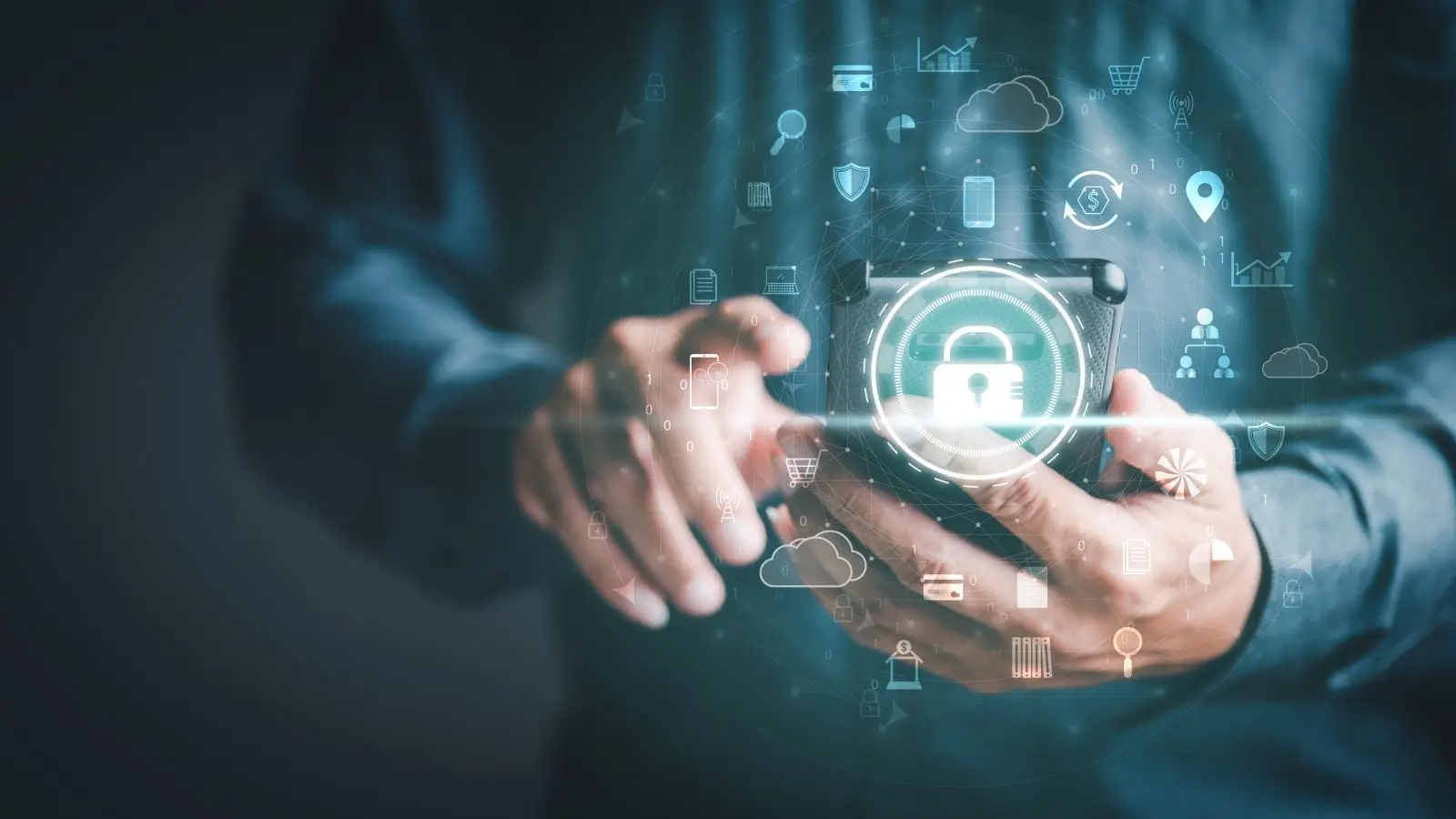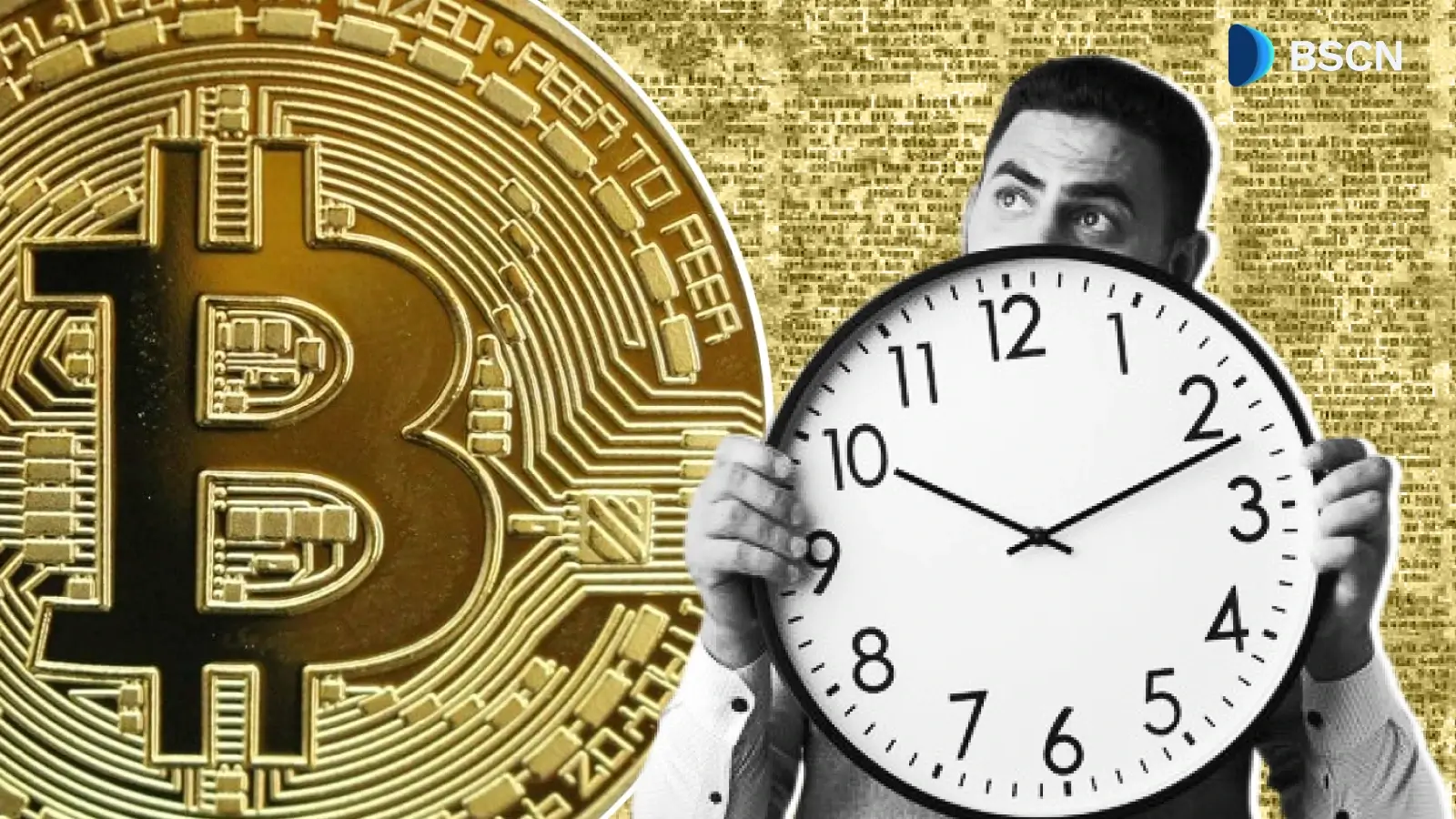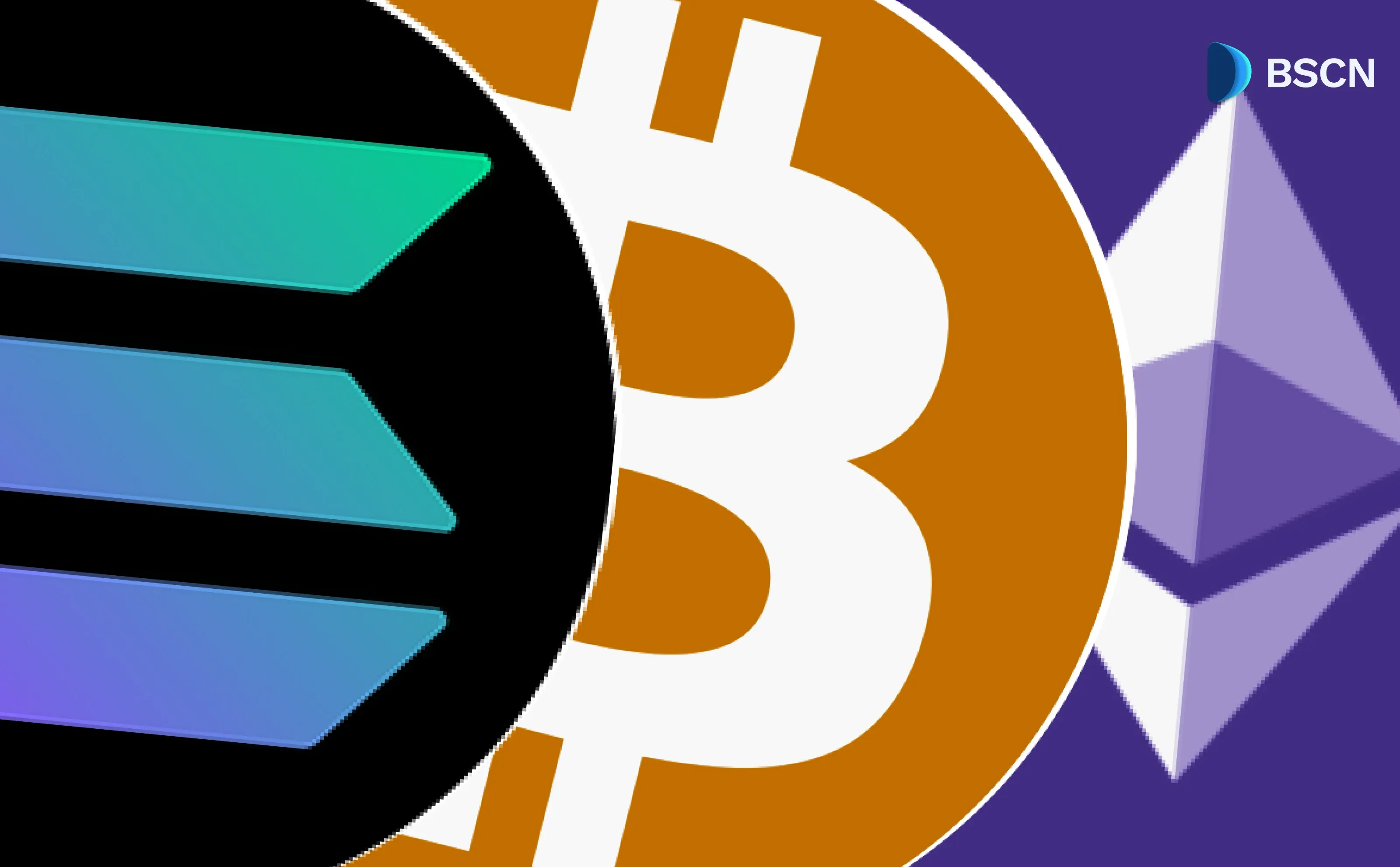Deepdive
(Advertisement)
Multi-Factor Authentication for Crypto Security

Multi-factor authentication protects crypto accounts using multiple verification methods. Learn how MFA stops hackers even with stolen passwords.
Crypto Rich
April 14, 2021
(Advertisement)
Table of Contents
Last revision: October 20, 2025
Multi-factor authentication (MFA) requires users to verify their identity with two or more separate credentials before accessing an account. The security method combines something you know (password), something you have (phone or security key), and something you are (fingerprint or face scan). This layered approach blocks unauthorized access even when passwords fall into the wrong hands.
Hackers constantly target crypto exchanges and wallets holding digital assets. Crypto platforms lost $3.8 billion to security breaches in 2022, dropping to $2.2 billion in 2024. However, 2025 has seen a resurgence with over $2.17 billion stolen in the first half alone, driven by major incidents like the $1.5 billion ByBit hack. At the current pace, stolen funds could eclipse $4 billion by year end, with compromised user credentials accounting for a significant portion of incidents.
Why Do Crypto Accounts Need Multi-Factor Authentication?
Passwords alone leave accounts vulnerable to multiple attack vectors. Hackers use phishing emails, keyloggers, database breaches, and social engineering to steal login credentials. Once they have a password, attackers gain complete access to unprotected accounts.
Crypto accounts make particularly attractive targets. Unlike traditional bank accounts with fraud protection and transaction reversals, cryptocurrency transactions are permanent. Hackers who breach a crypto exchange account or wallet can drain funds within minutes, and victims have no practical way to recover stolen assets.
MFA blocks most unauthorized access attempts by requiring attackers to compromise multiple authentication factors simultaneously. A stolen password becomes useless without the victim's phone, security key, or biometric data.
How Does Multi-Factor Authentication Work?
MFA builds security through three distinct types of authentication. Each category provides independent verification of user identity.
Knowledge factors include passwords, PINs, and security questions. Only the legitimate user should know this information.
Possession factors involve physical objects like smartphones, hardware security keys, or one-time password generators. The user must hold a specific device to authenticate.
Inherence factors rely on biometric data such as fingerprints, facial recognition, or iris scans. These methods verify someone's physical characteristics.
Effective MFA implementations require at least two factors from different categories. Using a password and a security question both fall under knowledge factors, providing weaker protection than combining a password with a hardware key.
What Types of Two-Factor Authentication Exist?
Two-factor authentication (2FA) is the most common form of MFA. Different methods offer varying levels of security and convenience.
SMS and Voice Verification
Text message verification sends a one-time code to a registered phone number. After entering their username and password, users receive the code via text and input it into the website or app.
Voice verification works similarly. The system automatically calls the registered number and reads the code aloud. This method appears mainly in countries with poor cell service or where smartphones are expensive.
SMS-based 2FA provides basic protection but carries security risks. Attackers can intercept text messages through SIM swapping, where they convince mobile carriers to transfer a phone number to a new SIM card under their control. High-profile crypto thefts have used this technique repeatedly.
Security experts recommend avoiding SMS 2FA when stronger alternatives are available, particularly for accounts holding significant crypto assets.
Authenticator Apps
Authenticator applications generate time-based one-time passwords (TOTP) that refresh every 30 seconds. Popular options include Google Authenticator, Authy, and Microsoft Authenticator. These apps work offline and create codes directly on the user's device.
Setup involves scanning a QR code that links the app to the specific account. Once configured, the app produces unique six-digit codes that users enter during login.
Authenticator apps deliver stronger security than SMS because codes are generated locally on the device. Attackers would need physical access to the phone or the recovery seed to compromise the authentication.
Hardware Security Keys
Hardware security keys are physical devices that plug into a computer's USB port or connect wirelessly via NFC or Bluetooth. Popular models include YubiKey, Titan Security Key, and Trezor.
These devices use cryptographic protocols to verify user identity. During login, users insert the key and press a button to confirm their presence. The key communicates with the website through encrypted channels, making interception or duplication extremely difficult.
Hardware keys provide the highest level of 2FA security currently available. They resist phishing attacks because the cryptographic response is specific to the legitimate website domain. Even if users enter passwords on fake websites, hardware keys will not authenticate.
Push Notifications
Push notification authentication sends an alert to a registered mobile device when someone attempts to log in. Users simply tap to approve or deny the access request. This method requires an internet connection but eliminates manual code entry.
Push notifications work best when combined with other security measures. Some implementations display information about the login attempt, such as location and device type, helping users identify suspicious activity.
Biometric Authentication
Fingerprint scanners and facial recognition systems use unique physical characteristics to verify identity. Modern smartphones include built-in biometric sensors that many crypto apps and exchanges support.
Biometric authentication provides convenience but works best alongside other factors rather than as a standalone method. Unlike passwords or security keys, biometric data cannot be changed if compromised.
How Do Crypto Platforms Implement MFA?
Major cryptocurrency exchanges require or strongly encourage MFA for all user accounts. Coinbase, Binance, Kraken, and other platforms support multiple 2FA methods, typically offering authenticator apps and hardware keys as primary options.
When users enable MFA on an exchange, they typically complete these steps:
- Navigate to security settings.
- Select the preferred 2FA method.
- Complete the setup process (scan QR code or register hardware key).
- Confirm the setup by entering a verification code.
- Save backup codes for account recovery.
Many exchanges also implement withdrawal whitelisting, which requires MFA verification when adding new withdrawal addresses. This prevents attackers from redirecting funds even if they compromise the account.
Non-custodial wallet applications handle MFA differently. Since these wallets store private keys locally on the user's device, MFA typically protects app access rather than transaction signing. Some hardware wallets include built-in MFA features that require physical button presses to confirm transactions.
What Are Common MFA Vulnerabilities?
MFA dramatically improves account security but remains vulnerable to specific attacks. Understanding these weaknesses helps users choose appropriate protection levels.
- Man-in-the-middle attacks intercept authentication codes as users enter them on phishing websites. Attackers create fake login pages that capture both passwords and 2FA codes, then immediately use them to access the real account. Hardware security keys block these attacks through domain verification.
- SIM swapping targets SMS-based 2FA by hijacking the victim's phone number. Attackers gather personal information through social engineering or data breaches, then convince mobile carriers to port the number to a new SIM card. This grants access to SMS verification codes.
- Malware infections can compromise 2FA on the same device used for authentication. If a computer or phone contains keylogging software or remote access trojans, attackers may capture authentication codes as they're generated or entered.
- Social engineering manipulates users into bypassing their own security measures. Attackers might impersonate support staff and request 2FA codes or recovery information. Legitimate platforms never ask users to share authentication codes.
- MFA fatigue attacks (also called push bombing) involve bombarding users with repeated authentication requests until they approve one accidentally or out of frustration. Attackers send dozens or hundreds of push notifications to overwhelm targets. This technique successfully compromised major organizations including Uber and Cisco in recent years, and has become increasingly common in 2024 and 2025.
- Account recovery weaknesses sometimes allow attackers to reset MFA settings through compromised email accounts or weak security questions. Protecting recovery email addresses with strong MFA becomes critical, as does avoiding easily guessable security question answers.
How Should Users Configure MFA for Maximum Security?
Optimal MFA configuration depends on asset value and technical comfort level.
Hardware security keys provide the strongest protection for high-value accounts holding significant crypto assets. Register multiple keys as backups and store them in separate secure locations.
Authenticator apps serve as a practical middle ground, offering strong security without requiring additional hardware purchases. Enable device backup features where available and securely store recovery codes offline.
Email accounts used for crypto platform registration require equal or stronger MFA protection. Many account compromises begin with breached email accounts that attackers use to reset passwords and disable security features.
Avoid SMS 2FA when alternatives exist, particularly on accounts holding valuable assets. If SMS remains the only option, consider using a dedicated phone number not associated with your primary identity.
Regular security audits help maintain protection. Review active sessions, remove unused 2FA methods, and update recovery information periodically.
What Happens When MFA Fails or Is Lost?
Account recovery presents a fundamental security tradeoff. Easy recovery processes create vulnerabilities that attackers exploit, while strict requirements may permanently lock out legitimate users.
Most crypto platforms provide backup codes during MFA setup. These single-use codes allow account access when primary authentication methods fail. Print these codes and store them securely offline, never in digital form on the same device used for crypto access.
When all authentication methods and backup codes are lost, recovery typically requires identity verification through platform support. This process may involve providing identification documents, answering detailed account history questions, or completing video verification calls.
Some platforms implement time-delayed recovery that allows account access after a waiting period (often 24-48 hours) following verification. This delay gives legitimate users time to notice unauthorized recovery attempts and block them.
Hardware wallet users who lose their devices can recover funds using seed phrases, but only if these phrases were properly backed up during initial setup. Lost seed phrases combined with lost hardware devices result in permanent fund loss with no recovery option.

How Does MFA Relate to Other Crypto Security Practices?
MFA forms one layer of comprehensive crypto security. Combining multiple protection methods creates the strongest defense.
- Cold storage keeps private keys on devices never connected to the internet, eliminating online attack vectors. Hardware wallets provide a form of cold storage while still allowing convenient transaction signing.
- Withdrawal limits restrict the amount that can be transferred from an account within specific timeframes. Even if attackers bypass MFA, limits may minimize potential losses.
- IP whitelisting allows account access only from pre-approved IP addresses. This geographic restriction adds another hurdle for remote attackers.
- Transaction signing on hardware devices ensures private keys never touch internet-connected computers, even when initiating transfers.
- Regular software updates patch security vulnerabilities in wallet applications and operating systems that attackers might exploit to bypass security measures.
The most secure approach layers multiple protections. Users might keep the majority of funds in cold storage, use hardware keys for MFA on exchange accounts holding smaller amounts for trading, and maintain strict access controls on all recovery methods.
What Future Developments May Change MFA?
Passkeys represent an emerging authentication standard that combines the security of hardware keys with the convenience of biometric authentication. The technology uses cryptographic key pairs stored securely on devices, with the private key never leaving the user's device.
Apple, Google, and Microsoft have implemented passkey support across their platforms. Major crypto services including Coinbase and Binance now offer passkey authentication as an alternative to traditional 2FA methods. Passkeys resist phishing because authentication is cryptographically bound to specific websites, matching the phishing-resistant criteria outlined in the updated NIST Special Publication 800-63-4 guidelines released in 2024.
Decentralized identity solutions may reduce reliance on centralized authentication systems. These protocols allow users to control their identity credentials directly, enabling more secure and privacy-preserving authentication methods.
Behavioral biometrics analyze patterns in how users interact with devices, such as typing rhythm or mouse movement. These continuous authentication methods may supplement traditional MFA by detecting suspicious activity even after initial login. Some wallet applications have begun integrating AI-driven behavioral analysis to flag unusual patterns that might indicate account compromise.
Conclusion
Multi-factor authentication reduces unauthorized access to crypto accounts by requiring multiple independent verification methods. SMS-based 2FA provides basic protection, while authenticator apps and hardware security keys offer stronger security. Users holding valuable crypto assets should implement the strongest available MFA methods, secure recovery credentials offline, and combine authentication protections with other security practices such as cold storage and withdrawal limits. Hardware security keys currently provide the highest level of practical security for most users, blocking phishing attacks and credential theft that compromise single-factor authentication.
Sources
- Chainalysis. (2025). "2025 Crypto Crime Mid-Year Update."
- National Institute of Standards and Technology. (2024). "Digital Identity Guidelines: Authentication and Authenticator Management." NIST Special Publication 800-63-4
- Google Research. (2016). "Security Keys: Practical Cryptographic Second Factors for the Modern Web."
- Federal Trade Commission. "Consumer Alerts and Identity Theft Resources."
- FIDO Alliance. (2023). "FIDO User Authentication Specifications." FIDOalliance.org
Read Next...
Frequently Asked Questions
What is the most secure type of two-factor authentication?
Hardware security keys provide the strongest 2FA security because they use cryptographic protocols that resist phishing and cannot be intercepted remotely. They verify website authenticity before authenticating, preventing attacks that capture codes on fake sites.
Can hackers bypass multi-factor authentication?
Hackers can bypass some MFA methods through SIM swapping (SMS codes), man-in-the-middle attacks (intercepting codes), MFA fatigue attacks (push bombing), or malware on the authentication device. Hardware security keys effectively prevent most bypass attempts due to cryptographic verification and physical possession requirements.
What happens if I lose my two-factor authentication device?
Users who saved backup codes during MFA setup can regain access using those codes. Without backup codes, account recovery requires contacting platform support and completing identity verification, which may take several days and requires providing personal identification documents.
Disclaimer
Disclaimer: The views expressed in this article do not necessarily represent the views of BSCN. The information provided in this article is for educational and entertainment purposes only and should not be construed as investment advice, or advice of any kind. BSCN assumes no responsibility for any investment decisions made based on the information provided in this article. If you believe that the article should be amended, please reach out to the BSCN team by emailing [email protected].
Author
 Crypto Rich
Crypto RichRich has been researching cryptocurrency and blockchain technology for eight years and has served as a senior analyst at BSCN since its founding in 2020. He focuses on fundamental analysis of early-stage crypto projects and tokens and has published in-depth research reports on over 200 emerging protocols. Rich also writes about broader technology and scientific trends and maintains active involvement in the crypto community through X/Twitter Spaces, and leading industry events.
(Advertisement)
Latest News
(Advertisement)
Crypto Project & Token Reviews
Project & Token Reviews
Comprehensive reviews of crypto's most interesting projects and assets
Learn about the hottest projects & tokens
Latest Crypto News
Get up to date with the latest crypto news stories and events

















